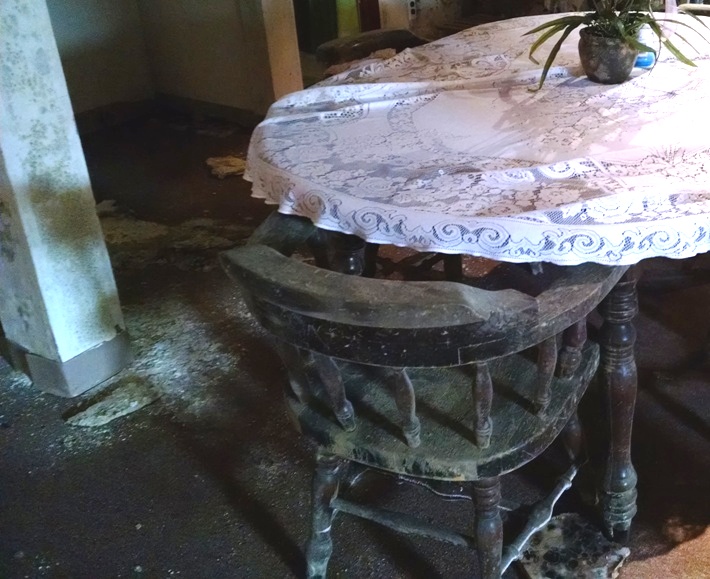Find a Mold Specialist Now
Click or Call, Toll-Free 24/7
Chaetomium Mold in the Home
Chaetomium grows rapidly. It typically looks white and cottony when it first begins to grow but later turns olive green or gray in color. It is often found on wood, especially old or damaged or deteriorating wood. It is commonly found on water-damaged dry wall. It can also be found growing on paper, including wallpaper.
Like other types of mold, it has been linked to a number of health problems. It can also cause significant damage to your home, if not addressed in a timely manner. You can read more about how mold can damage your home here.
Health Problems Associated with Chaetomium
All types of mold can cause health problems, including allergic reactions and respiratory problems. Certain strains tend to pose a greater health hazard than others, however, and different strains may be more likely to cause some symptoms than others.

According to the Annals of Dermatology, this strain of mold often causes fungal infections of the fingernails and toenails. Medically known as onychomycosis, this infection can cause thickening and discoloration of the nails and cause them to become brittle or crumble. The area around the nails may be tender or painful and there may also be a foul odor caused by the infection. Some people become very self-conscious about the appearance of their infected nails and it can interfere with their willingness to socialize and even affect their self-esteem. While an infection of the fingernails or toenails may sound like a relatively minor ailment, and it is certainly not life-threatening, it can take a surprisingly long time to clear up even with medical treatment.
Of much greater concern is the risk of severe respiratory tract infections, which the Journal of Clinical Microbiology reports are sometimes fatal in patients with weakened immune systems. That includes premature infants and people undergoing chemotherapy as well as those with immune system disorders such as HIV and AIDS. Respiratory tract infections include pneumonia and may result in pulmonary hemorrhage (bleeding in the lungs).
There have been some reports of neurological problems and autoimmune disorders resulting from exposure to chaetomium, although we had trouble finding studies about this in peer-reviewed medical journals. Some people think exposure to this strain of mold can damage the myelin sheath, or the protective lining, around nerves, which can lead to conditions such as multiple sclerosis. Some people also believe exposure to this type of mold may be associated with certain types of cancer.
Dealing with Health Problems Related to Chaetomium Exposure
If you are experiencing any health problems you think might be related to exposure to mold, see your doctor as soon as possible. Let your doctor know if you've been exposed to mold and, if you know, what type of mold it is.
Your doctor might recommend you see a specialist, such as an allergist, a pulmonologist (a lung specialist), or even a dermatologist (to treat a persistent fungal infection of your fingernails or toenails). There isn't a medical specialty that deals with mold-related illness exclusively. Instead, you will need to see the specialist or specialists that treat the problems you are having as a result of exposure to mold.
In addition to getting medical treatment, you'll need to have the mold removed from your home in order to recover from any mold-related health problems. The sooner you can have the mold removed, the sooner you can recover. Not only that, but the longer you continue to be exposed to mold, the greater your risk of serious complications or health problems that won't go away even with treatment, such as asthma. Asthma can be managed but there is no cure for it.
If you're having mold-related health problems, your doctor may recommend that you have someone else handle the mold removal for you rather than do the work yourself. The process of cleaning up household mold stirs up mold spores so that they are easily inhaled and that can make your condition worse. The U.S. Environmental Protection Agency suggests consulting your doctor before tackling a mold removal job on your own.
For Help with Mold Removal
If you need assistance with mold removal, or if you'd just like some expert advice on the subject, you can schedule a free consultation in your own home with a mold removal professional. There is no cost to you and no obligation on your part, so we encourage you to take advantage of this valuable service. Follow this link to find qualified mold removal professionals offering free consultations in your area.
Return From Chaetomium To Our Main Mold Types Page
Privacy Policy Terms and Conditions Accessibility Do Not Sell My Information Disclaimer Contact Us




